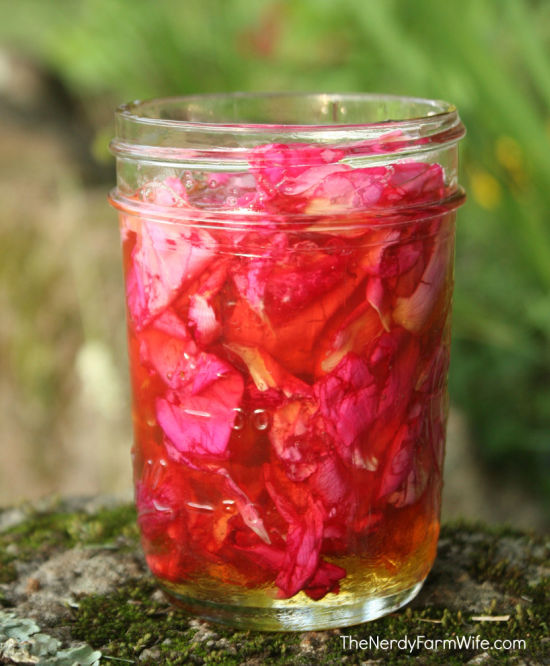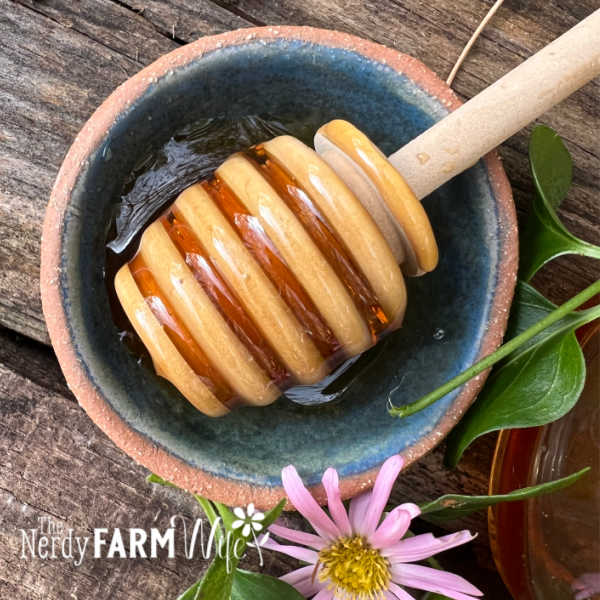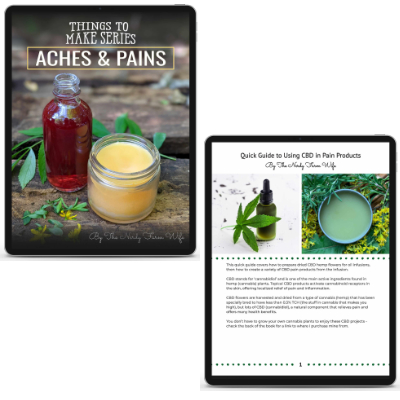5 Grocery Store Remedies + Ways to Use Them
My favorite home remedies & skin care recipes involve simple ingredients that are easy to find locally and don’t break my budget. This is where the local grocery store comes in handy!
Here are 5 grocery store ingredients I always keep in stock, plus tips and recipes for using them.

Make grocery store remedies & skin care recipes using simple ingredients that are easy to find locally and won’t break your budget!
Remedies & Skin Care Projects from the Grocery Store

1. Apple Cider Vinegar
Also called “ACV”, apple cider vinegar is a common astringent and mineral-rich acidic liquid that can be used to make liniments, hair rinses, and herbal remedies. It’s widely available and inexpensive, making it a perfect grocery store remedy to start experimenting with.
Here’s how to use apple cider vinegar in a bath, plus more recipes that feature vinegar:
Vinegar Bath Instructions
Vinegar baths are helpful for those with mild sunburn, athlete’s foot, body acne, and flaky skin & scalp. You can combine vinegar and Epsom or sea salts in the same bath, if you wish.
- Add 1 cup of apple cider vinegar to a comfortably warm bath.
- Soak in the water for at least 10 minutes.
- You can double the amount of vinegar if you’re okay with the stronger scent.
- Some people prefer rinsing the vinegar away, while others like for it to stay on their skin. Try both ways and see which method you like best!

Make Medicinal Vinegars & Oxymels
You can combine herbs and apple cider vinegar to make alcohol-free herbal extracts.
Vinegar extracts are quite sour, so you may want to combine them with equal parts of honey to make an oxymel (which is a sweet and sour herbal remedy).
Here’s an article I wrote all about making herbal vinegars and oxymels, with suggestions for which herbs to use, plus how to take them.
– How to Make Medicinal Vinegars & Oxymels
and here’s an example oxymel recipe:
– Rose Petal Remedy (Rose Oxymel)

Create Flower Infused Vinegars
These vinegars are not just gorgeous, they’re useful too! They can be used as a hair rinse (leaves your hair soft and shiny!), for natural cleaning, as a fabric softener, and more.

2. Ginger
Ground ginger, just like the kind you find in the spice aisle at your local store, is another very versatile grocery store remedy. It’s warming, fights colds and flu, and is excellent at helping tummy aches, stomach bugs, motion sickness, and nausea.
Some of my top and most-often-used remedies involve adding ground ginger to pain salves, and making the quick ginger/honey remedy as written below.

Quick Ginger/Honey Remedy
This is one of the fastest and best remedies! With two kids who are prone to car sickness, three-fourths of my family dealing with celiac disease and sensitive stomachs, plus the usual colds and flus that come around, I find myself pulling out the ginger and honey multiple times each year.
It’s so easy, you can teach your kids to make their own mixture. (An empowering way to introduce herbalism!)
To make, combine one small pinch of ground ginger with a small spoonful of honey. Adjust the ginger/honey ratio to taste. Take as needed for nausea and stomach ache. (Just remember – don’t give honey to kids under age 1.)

Add Ginger to Lotion Bars & Salves
If you’re prone to cold hands and feet, or if you’re making products for aches and pains, ginger powder is an excellent addition! It works by increasing circulation to the area, providing warmth and pain relief.
Here’s a lotion bar recipe that combines ginger with cayenne pepper to make sure your feet stay nice and toasty warm when it’s chilly outside:
– Warm Toes Lotion Bars Recipe
If you’re adding ginger to a pain salve formula, try infusing each cup of oil with 1 to 2 tablespoons of ginger powder.
Check out my Things to Make for Aches & Pains eBook set for more recipes and information specifically about making pain products.
Even More Ways to Use Ginger!
Here are even more recipes and tips for using ginger.
– 14 Ways to Use Ground Ginger
– Easy Ginger Honey Syrup Recipe
– How to Make a Ginger Tincture

3. Honey
Not just a natural sweetener, honey also has healing benefits when applied to your skin, or taken for sore throats. A honey face wash works splendidly for both acne-prone skin, and dry, flaky skin.
Honey is antibacterial and can heal damaged or burned skin, and some tough-to-treat wounds (see the link to my diabetic dad’s honey story below.)
Here’s how to make a honey face wash, plus some recipes/articles featuring honey:
Honey Face Wash Instructions
Pour a small amount of honey into your hand, then massage over your face and throat. If possible, leave on your skin for 5 to 10 minutes. Rinse off with lukewarm water. (It’s helpful to apply before a shower, to make it easy to wash off!)

Honey for Minor Burns
When I was a kid, my mom always put cold egg white on our burns. It worked very well as a quick and easy home remedy, but as an adult with a family of my own, I tend to most often reach for honey for burns.
First we run the area under cool water for several minutes, then apply a very thin layer of honey and let it stay on your skin. If needed, you can wrap some gauze around the area. (For deep burns, areas larger than a couple inches, or if the burn is on a baby, or for any concerns, definitely consult a health care professional – this remedy is for minor burns only.)
Using Honey for Diabetic Wounds
From personal experience, I’ve seen first-hand how amazing honey is at healing up hard-to-treat sores.
Here’s the tale of how honey helped my dad’s foot sore that wouldn’t heal. (Heads-up for those who are squeamish, the before photo of his foot may be a little icky for sensitive souls.)
– How Raw Honey Saved My Diabetic Dad’s Foot

Sore Throat Honey Spray
Combined with herbal tea or tinctures, honey makes an excellent spray that soothes scratchy, itchy throats. Anytime we get a cold or flu that looks like it’s going to hang around a couple days, I make a quick batch of throat spray to keep in the fridge, and use it as a tool to help us feel better faster!
Here’s how to make those:

4. Oils/Fats
Plain or herbal infused oils are a staple for every herbalist or skincare maker. You can absolutely use oils from your local grocery store, as long as they are fresh. (Though ordering online is usually a better deal per ounce and the selection is much better.)
Olive oil or sunflower oil are traditional staples for making salves, lip balms, scrubs, etc. Grapeseed is extra light and great for acne-prone skin. Avocado oil is very nice for dry skin. If you’re not sensitive or allergic to coconut oil, then it’s also an excellent item to have on hand. Tallow is another ingredient that’s particularly useful for those with eczema.
While plain oil can be massaged directly on your skin after a shower or bath to help seal in moisture, for less messy results, try turning those oils into a salve or other easier-to-apply product.
A few articles & recipes featuring oils that you can buy at your local store:

5. Salt
There’s a variety of salt available at your local stores! Most commonly and easily found are sea salt and Epsom salt, but here are other ones to consider too:
- Epsom Salt – made up of magnesium and sulfate, especially useful for aching muscles (check the pharmacy or health product section of your store for this item)
- Sea Salt – affordable, contains trace minerals, less processed than regular table salt
- Himalayan Pink Salt – mineral rich and a beautiful pink color
- Celtic Salt – high amount of minerals, higher cost so I tend to use this for food/internal purposes rather than soaks
- Black Lava Salt – also called Black Hawaiian sea salt; the dark color comes from being infused with activated charcoal (use in lower amounts combined with other salt to prevent a charcoal stain)
- Dead Sea Salt – mineral rich salts reputed to have many therapeutic benefits for those with forms of arthritis and skin conditions such as psoriasis
- Red Alaea Sat – also called Kauai red sea salt; the beautiful natural red color comes from iron-rich red volcanic clay
Basic Salt Bath Instructions
Salt baths are helpful for aches, pains, and muscle strains, plus some forms of eczema and other skin problems.
Add 1 to 2 cups sea salt or Epsom salt to a comfortably warm bath, then soak in the water. You may wish to add some of the specialty salts (black lava, Himalayan, etc) for visual appeal.
Fancier Salt Soaks
Here are a couple more salt bath recipes, only they’ve been jazzed up with herbs and other ingredients:
Salt Water Mouth Rinse
A simple rinse of warm water and salt is surprisingly effective for easing blisters in your mouth, or for helping a sore tooth. It works as an antiseptic that gently flushes away and inhibits growth of bad bacteria.
To make a salt rinse for your mouth: Combine 1 teaspoon of salt and 1 cup of warm water. Stir the salt so it dissolves completely. Rinse your mouth with some of the solution for 15 to 30 seconds, then spit. (Don’t swallow, you want to remove the bacteria causing the problem from your body.) Repeat every few hours, as needed.
I often add a couple drops of spilanthes tincture or use calendula tea to make salt water mouth rinses, for an extra boost against bad bacteria.

I hope you found these ideas helpful!
Don’t think you have to spend a ton of money or do expensive special orders if you’re not able to. You can get your start making natural remedies and skin care simply by adding a couple things to your normal grocery list each week!



hi
thanks so much for putting this article out there for us
i have some serious reading to do tomorrow and since its winter with revoltingly cold miserable wet weather – this is just what i needed
liz
Could you use fresh ginger in place of the dry?
Hi Debbie! In some cases you can use fresh ginger.
Things like syrups and tinctures can be made with fresh.
However, if you’re making an infused oil, salve, or lotion bars, then dried ginger is the better choice. (You don’t want anything with water in it, that could spoil in salve.)
My first exposure to herbal medicines was through the use of grocery store herbs and honey. Each year I make an oxymel of honey, vinegar, lemon and ginger. I take 1 tablespoon 3X a day when I feel a sore throat or cold coming on. It doesn’t keep me from getting the sore throat or cold but it significantly makes me A) feel better faster and B) eases any pain related to sore throat.
That sounds like such a great combination! :)